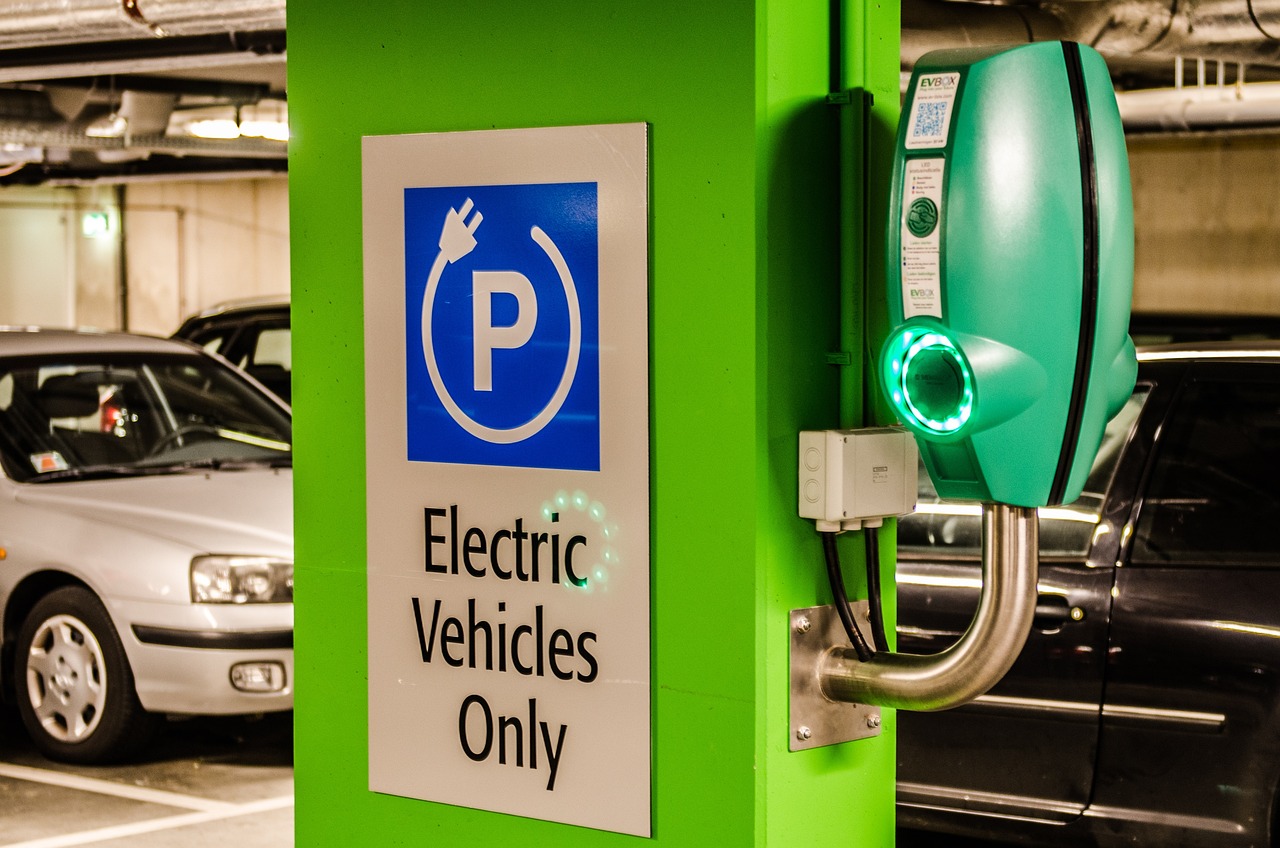A GROUP founded by motoring journalist and TV presenter Quentin Wilson has released a myth-busting book on electric vehicles (EVs).
FairCharge, supported by the RAC, has published The Little Book of EV Myths, which tackles 21 examples of what it calls, “electric vehicle misinformation”.
The book highlights the importance of the facts around the EV industry – and what drivers can really expect when they own one – and is available for free.
Topics covered in the book include EV fires, pollution, electric car costs and range.
It also examines the mining of materials for EV batteries and the impact electric vehicles have on the UK grid.
“There are more myths surrounding electric cars than Elvis Presley,” it says. “That’s the way it feels anyway. Everything from EVs pollute more than petrol cars, the batteries fail after three years, the electricity grid won’t cope, they catch fire more than combustion cars and that hydrogen, not batteries, is the future.
“There’s even a new collective noun for all these myths – Misinfo. Electric cars may not be for everybody, but with so many now on our roads, the technology works and has proved reliable for a million UK owners who drive EVs every day.
“Many of the current EV myths have taken root on social media because of a lack of proper understanding of the technology of batteries, electrification, and renewables.”

Motoring expert Quentin Wilson has put together The Little Book of EV Myths, available for free
EV myths explained in the Little Book of EV Myths
- EVs are more expensive than combustion cars
It says: “This is certainly true on many models. But the price difference is narrowing now.
“A combination of anti-EV stories in the media, the Government’s u-turn on the 2030 sales deadline and record high interest rates have dampened retail demand so much that manufacturers are discounting prices on new EVs by as much as 15%.
According to research by Auto Trader in November 2023, the once £20,000 price premium between a new Tesla Model 3 and petrol BMW 3 Series has narrowed to just £950 between the base models.
“Tesla have cut their prices and BMW have raised theirs.”
- EV batteries don’t last
The book says: “Many think the lithium-ion battery in their phone has the same chemistry as an EV. That’s not so.
“To create confidence in the technology most car makers now offer eight-year, 100,000-mile battery warranties on EVs – that’s a greater warranty cover than on an internal combustion engine.
“In 2023, a study of 15,000 EVs by Seattle battery analysis company, Recurrent Motors – How Long Do Electric Car Batteries Last – found that only 1.5% of batteries in the study had been replaced under warranty.”
- EVs regularly catch fire
“The fire service estimate there are around 100,000 vehicle fires every year in the UK and records for 2022 to 2023 show only 239 EV fires – or 0.24%,” the book says.
“The Swedish Contingencies Agency have reported that ‘Petrol and diesel cars are 20 times more likely to catch fire than EVs’.
“In 2022 611,000 vehicle fires were recorded in Sweden of which 23 were EV fires – or 0.004%.”
- EVs pollute more than ICE (internal combustion engine) cars
The book says: “A persistent myth that EVs aren’t ‘green’ has grown up around pollution from battery mining and manufacture, often in China, where coal-fired electricity grids power car and battery factories. But research by the International Council on Clean Transportation (ICCT) has shown that when driven in Europe, an EV will pay off its carbon debt after around 11,000 miles, after which the full life cycle CO2 emissions are around three times lower than an average petrol car.
“A Carbon Brief analysis in 2023, showed that a Tesla Model Y, driven in the UK, would pay off its carbon debt after around 13,000 miles – less than two years’ driving.
“After 14 years of driving, the average petrol car has a carbon footprint of 45 tonnes of CO2. A Tesla Model Y driven over the same period in the UK would emit 14 tonnes of CO2 – a saving of 68%.
- EVs shift emissions from roads to power stations
“As we write in March 2024, 67% of power to the UK grid came from zero carbon sources. Wind accounted for 49%, gas 15%, nuclear 9%, and solar 9% – the rest a mix of biomass, imports, and hydro,” the book says.
“Driving an EV in the UK, charged on a low-carbon grid, or better still on a low-cost evening tariff where only renewable electricity is used, means that the energy emissions produced for the electricity to charge the EV’s battery are low.
“Even in coal intensive grids, Carbon Brief analysed that an EV in China would pay off its carbon debt at 22,000 miles and in Poland at 18,000 miles.”
READ MORE: ‘Why I love my electric car – and why you should get one too…’
It added: “Given that 80% of EVs are charged at home, at night on low-cost electricity tariffs from providers that supply certified renewable electricity, the claim that EV use in the UK is just moving pollution from one place to
another, is factually incorrect.”
- Hydrogen will displace EVs
“The IEA reports there are 27 million EVs in the world, compared to 72,000 hydrogen fuel cell cars,” the book says.
“There are only 11 hydrogen filling stations in the UK and just 265 across Europe.
“The UK Government’s Lifecycle Analysis of UK Road Vehicles, says that EVs are ‘much more efficient’ than hydrogen cars, using only a third of the energy. It’s also reported that the lifecycle emission from a hydrogen passenger car would be 60% to 70% higher than an EV, even if the hydrogen was ‘green’ and made from low-carbon sources.”
- EVs cost more to maintain
“With around 20 moving parts in an EV compared to more than 2,000 in a combustion car there are less friction facing parts and therefore less components to fail or replace,” the book says.
“No spark plugs, oil, timing belts or chains, exhausts, particulate filters, or clutches means that the total cost of ownership of an EV is significantly less than an ICE car. Tusker Direct, a UK leasing company with 16,000 EVs, estimates that their EV maintenance costs are 30% less than ICE.”
- EVs have short ranges
The guide says: “According to EV charging provider, Gridserve, the average real-world range of an EV in the UK in 2023 is 219 miles “meaning that the average motorist will be able to drive for two weeks on a single charge”.
“The Society of Motor Manufacturers and Traders (SMMT) agree, with their average figure slightly higher at 236 miles.
“The latest models with improved battery chemistries have much higher ranges with the Polestar 3 claiming 379 miles, the Polestar 2 406 miles, and the latest Tesla Model 3 at 391 miles.
“The highest range EV in the UK is currently the Mercedes EQS. A large 107.8 kWh battery pack and low drag coefficient means that the EQS can cover a claimed 458 miles on one charge.
“It’s important to say that these are all WLTP official battery range figures and – like combustion cars – will vary in real-world driving and colder temperatures.”
- There aren’t enough critical minerals in the world for EV batteries
“A 2023 paper in Sustainability by Numbers reported that the world has known reserves of 88 million tonnes of lithium: ‘enough for our electric vehicles, decades into the future’,” the book says.
“The report also noted that ‘known feasible lithium reserves’ have risen from 4m tonnes in 2008 to 22m in 2020, as more exploration identifies more commercially viable deposits.
“We still can’t accurately say exactly how much available lithium there is in the world as its exploration has been relatively recent.
“The Energy Transitions Commission 2023 report stated that battery designs and improved electro chemistry have reduced future cobalt needs by 50% in just five years. 50% of Teslas now use no cobalt and nickel-free LFP batteries are now being used in 40% of EVs, up from 7% in 2019.
“The ETC also estimate that by 2040 over 50% of lithium used in batteries could come from recycling.
“It’s also worth noting that cobalt has been used to refine petrol and diesel for the last 25 years – plus the batteries in phones, laptops, and tablets.”
- EVs lose much more range than petrol cars in winter
The guide added: “EV batteries do lose driving range in freezing temperatures but so do combustion cars.
“In 2020 the Norwegian Automobile Association tested 20 EVs in winter conditions and found that on average EVs lose up to 20% of range at temperatures between 0 and 2 degrees.
“The Nissan Ariya performed best with a 16% loss of range. “The latest generation of EVs now have heat pumps that speed up battery heating to reduce low temperature range loss.
“But, according to tests done by the US Department of Energy, in low temperatures the average gasoline car also loses 15% fuel efficiency and for shorter trips (before the engine has warmed up) the average increase in fuel consumption was 20%. Range loss in sub zero temperatures will also depend on driving style.”
- The mining of materials for EV batteries is very bad for the environment
“While all mining and drilling for energy is bad for the environment, we need to put those global emissions and pollution into context,” the guide says.
“According to the Energy Transition Commission’s latest report – Material and Resource Requirements for the Energy Transition – published July 2023 – the cumulative global emissions of CO2 and other greenhouse gases from battery mining and production of solar panels and wind turbines over the next 30 years will add up to between 15 to 35 gigatonnes of CO2.
“This should be compared to the 40 gigatonnes of CO2 from global fossil fuel energy extraction that’s emitted every single year.
“In 2018 the Intergovernmental Panel on Climate Change (IPCC) reported that 89% of global emissions come from fossil fuels.
“Attempting to argue that emissions from mining for battery minerals could possibly exceed the global emissions from exploration, drilling, extracting, shipping, refining, transporting, distribution and burning of fossil fuels is a bit of a stretch – even for a very hard-core EV doubter.”
- Charging an EV from the UK grid where the electricity is created by burning gas makes no sense
“According to the National Grid, in the first quarter of 2023, British wind farms created more electricity than was created by burning gas.
“Today, as we write this, National Grid ESO shows that 64% of the GB generation mix coming into the grid was zero carbon.
“It’s also worth remembering that according to Zap Map 80% of EV drivers charge at night on low-energy tariffs and most of the electricity used during low night-time tariffs is certified by electricity suppliers to be generated by renewables.
“Therefore, the majority of electric cars in the UK are charged not using coal or gas, but by electricity generated by renewable sources like wind, solar, biomass, hydro and nuclear.”
- Taking away the right to drive a diesel is a loss of freedom
“Nobody has ever threatened to take away the right to drive a petrol or diesel car,” the guide explains. “There will be combustion cars on our roads for the next 50 years – possibly longer.
“You will still be able to buy, sell, swap, trade and drive used combustion cars as long as there’s fuel to power them.
“What you won’t be able to do is to buy brand new combustion cars and vans after 2035 (or 2030 if a Labour government reverses the cut-off date).
“A surprising number of people think that the end of the sales of new combustion cars and vans also applies to used ones and that they wouldn’t be able to drive used combustion cars on public roads after 2030.”
It adds: “So, here’s the bottom line – don’t worry. You can drive your petrol or diesel car for as long as you want. Nobody is going to take it away.”

- EV batteries run out of power and break down
“In May 2023, the AA reported that the percentage of EVs ‘out of charge’ to which they were called out during the year was 2% – or a total of 135 EVs,” it says.
AA President, Edmund King OBE, said: “our data on ‘out of charge’ clearly shows that charging anxiety doesn’t match the reality.”
- EV tyres cause high levels of particulate pollution
“All vehicle tyres wear and leave nanoparticles of rubber in the atmosphere and rubber particulates on road surfaces,” the guide says.
“The question is are EVs more prone to wearing out their tyres because of their increased battery weight? In 2021 the RAC commissioned a report by Dr Euan McTurk that concluded thar tyre wear is determined more by driving style than weight and that fleets found that their EVs wore their tyres down at a ‘broadly similar rate to ICE cars’.”
- The electricity grid won’t cope
The guide says: “In a 2022 report the IPCC stated: “Decarbonising the transport sector will require significant growth in low-carbon electricity to power EVs”.
“But National Grid ESO says that EVs could actually “support the grid by storing excess generation from renewable sources and giving it back to the grid in times of high demand”.
“It says the UK could “comfortably handle” even an overnight switch to EVs, because of a fall of around 16% in electricity demand through technological efficiencies over the past two decades.
“National Grid also says that if the UK switched to EVs overnight “we estimate demand would only increase by around 10%”.
“The company does agree that more work is needed with distribution companies, Government, OFGEM and others to ensure that “the wires, the connections to charge points” are in place to support EVs.”
- Old EV batteries will be an environmental hazard
“Spent EV batteries are far too valuable to be chucked away,” the guide says. “Look at the price of old EV batteries on eBay and you’ll be surprised how much they sell for; £3,000 for a Leaf battery and up to £10,000 for a Tesla Model 3 pack.
“EV batteries can be recycled again and again to make more for EVs and for static energy storage batteries.
“Cobalt, nickel, manganese, and lithium are all highly prized minerals and 95% of the minerals in EV batteries can be extracted in the recycling process ready for use as cathode-active materials by car makers.
“The global EV battery recycling industry is estimated to be worth $6.8 billion by 2028, according to data provider, Statista.
“There are plenty of EV battery recycling companies both here and in the USA who can’t get enough spent EV batteries to satisfy demand.
“And there’s another irony. EV batteries are lasting much longer than anybody expected which is another reason why their values are so high.”








Leave a Reply